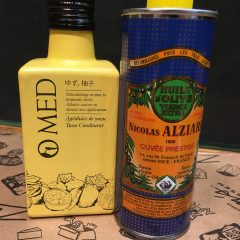
Vinegar: The Unsung Hero
The unsung hero of the culinary world is most certainly vinegar. Often undervalued and dismissed as unimportant, vinegar can be an afterthought when you’re cooking. In reality, it’s a secret weapon in your kitchen arsenal that helps unlock the subtle hidden flavors. Vinegar is, in my opinion, one of the best ways to add more […]
Read more »
Zingerman’s Art for Sale